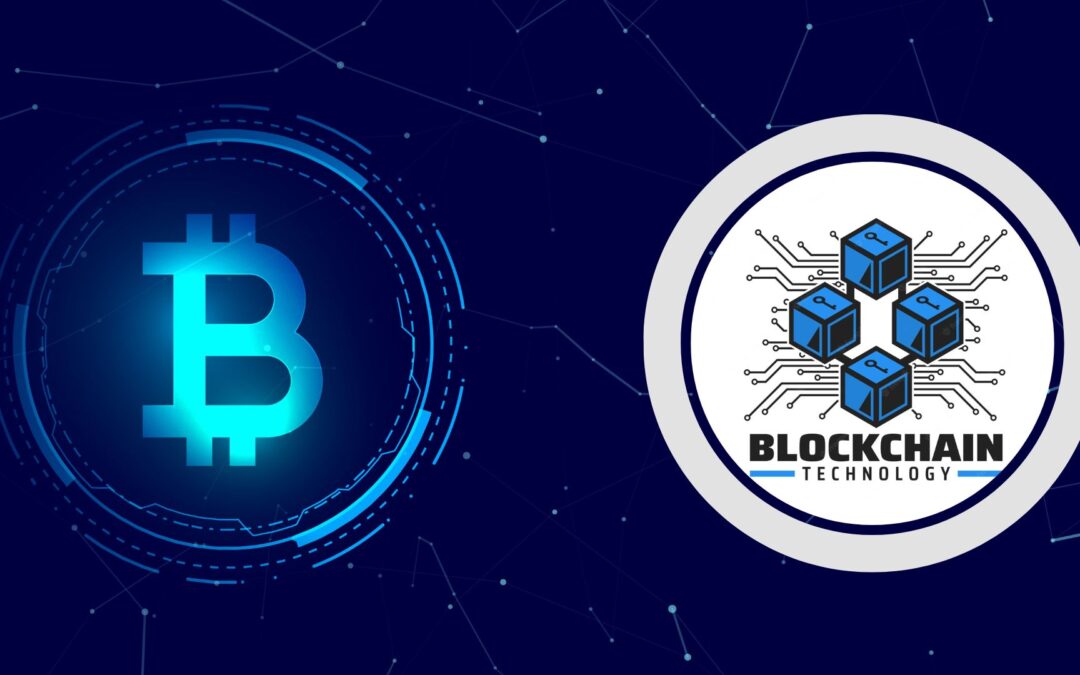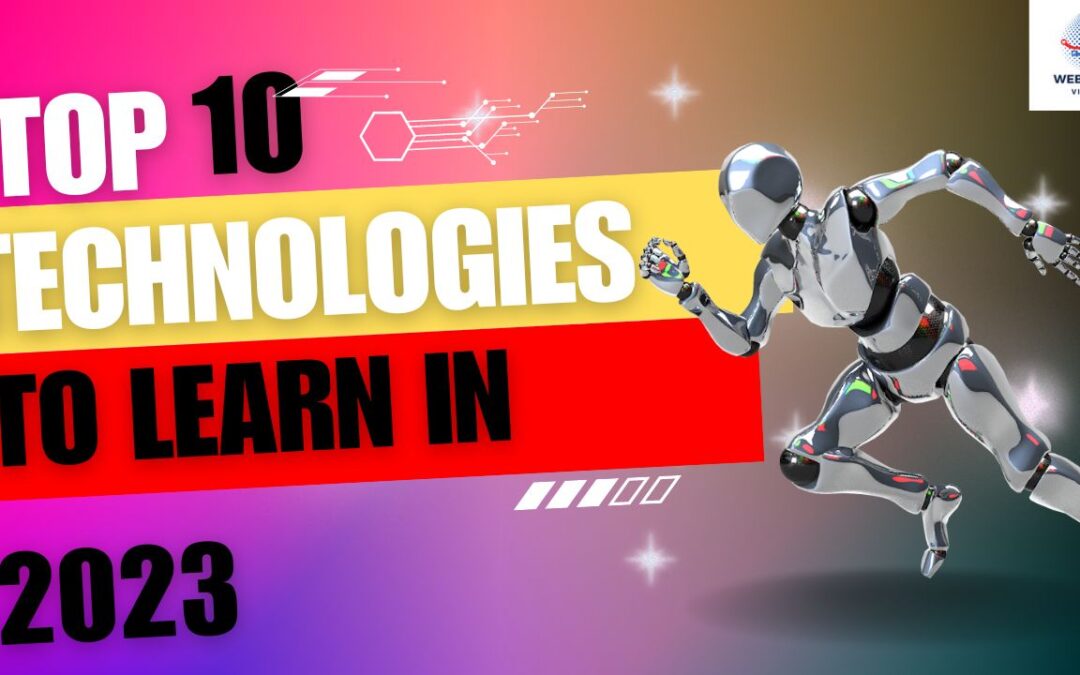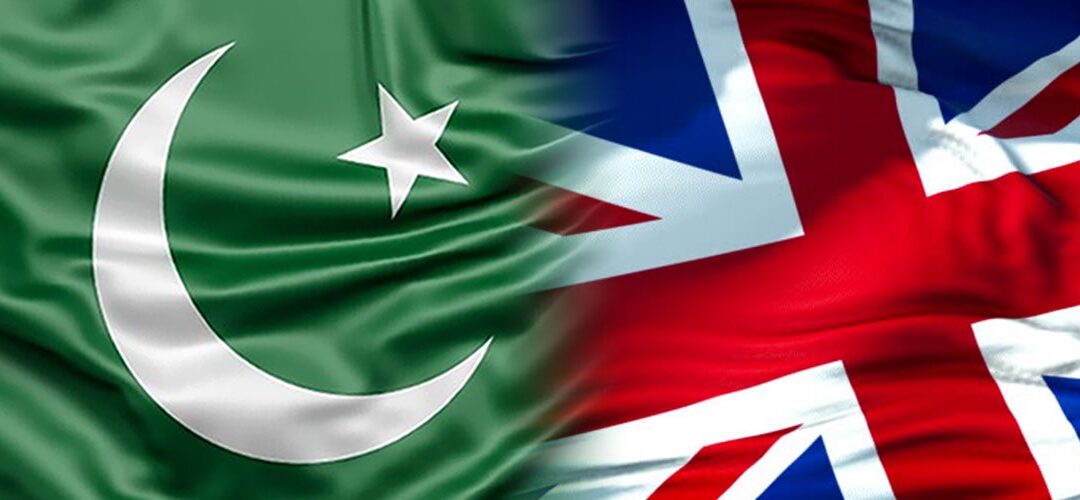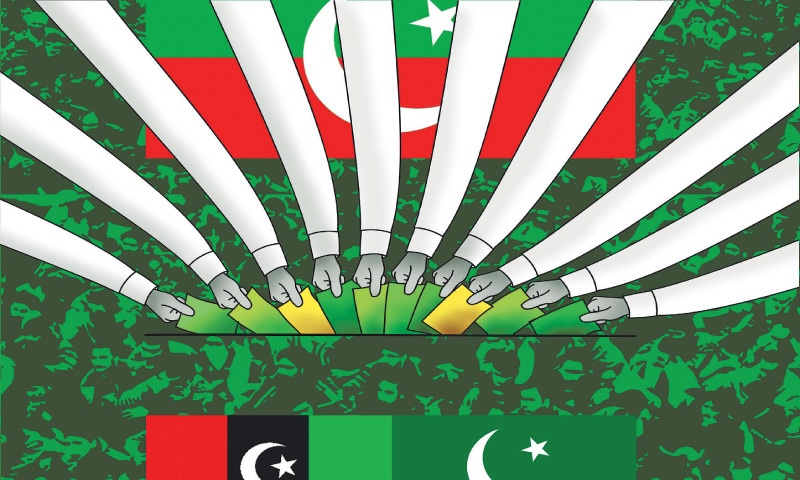
by admin | Aug 31, 2023 | Blockchain
What is Blockchain?
Blockchain is a decentralized and distributed digital ledger technology that records transactions across multiple computers in a way that is secure, transparent, and tamper-resistant. Each transaction, or “block,” is linked to the previous one, forming a chronological chain. This technology gained prominence as the underlying technology for cryptocurrencies like Bitcoin, but its applications have expanded beyond just digital currencies.
The key features of blockchain include:
- Decentralization: Unlike traditional centralized systems, blockchain operates on a network of computers (nodes) where each node has a copy of the entire ledger. This decentralized nature enhances security and eliminates the need for a single controlling authority.
- Transparency: Every participant in the blockchain network has access to the same information. Transactions are visible to all relevant parties, promoting transparency and trust.
- Immutability: Once data is added to the blockchain, it’s extremely difficult to alter or delete. This is achieved through cryptographic hashing and consensus mechanisms, making the blockchain tamper-resistant.
- Security: Transactions in a blockchain are verified through complex cryptographic algorithms, making it difficult for unauthorized parties to alter the data. This enhances the security of the system.
- Consensus Mechanisms: Blockchain networks use consensus algorithms to agree on the state of the ledger. Popular mechanisms include Proof of Work (PoW) and Proof of Stake (PoS), which ensure agreement among network participants.
- Smart Contracts: These are self-executing contracts with the terms directly written into code. They automatically execute actions when predefined conditions are met, reducing the need for intermediaries.
The role of blockchain in the latest technology landscape is significant and expanding:
- Cryptocurrencies and Finance: Blockchain’s most well-known application is in the realm of cryptocurrencies. It enables secure and transparent transactions without the need for intermediaries like banks.
- Supply Chain Management: Blockchain can provide end-to-end visibility in supply chains by recording every step of a product’s journey, reducing fraud, ensuring product authenticity, and improving traceability.
- Digital Identity: Blockchain can be used to create secure and tamper-proof digital identities, providing individuals with control over their personal data and reducing identity theft.
- Healthcare: It can improve the interoperability and security of electronic health records, ensuring accurate patient data sharing across healthcare providers while maintaining privacy.
- Voting Systems: Blockchain-based voting systems offer enhanced security, transparency, and tamper-proof record-keeping for elections.
- Real Estate and Land Title Records: Blockchain can simplify and streamline property transactions by providing a transparent and secure way to record ownership and transfer of real estate.
- Energy Trading and Grid Management: Blockchain can enable peer-to-peer energy trading, allowing consumers to buy and sell energy directly to one another.
- Cross-Border Payments: Blockchain can facilitate faster, cheaper, and more transparent cross-border transactions by eliminating intermediaries.
- Intellectual Property Protection: Blockchain can help creators prove ownership and protect their intellectual property rights.
- Digital Art and Collectibles: Blockchain technology is used to create verifiable scarcity and provenance for digital art and collectibles.
The role of blockchain in these areas is to create trust, security, and efficiency by eliminating intermediaries, ensuring data integrity, and enabling new models of interaction. However, it’s important to note that while blockchain holds significant promise, it’s not a solution for all problems and has its own challenges, including scalability and energy consumption.

by admin | Aug 31, 2023 | Technology, Top 10 Technologies to Learn in 2023
Top 10 Technologies to Learn in 2023
The Golden word of a wise man is “One machine can do the work of fifty ordinary men and no machine can do the work of one extraordinary man”.Furthermore, to become unprecedented in the 21st century you must be refreshed with the ongoing innovation of acquiring advancement in IT.
Some technologies were gaining momentum around that time and are likely to still be relevant in 2023. Here’s a list of the top 10 technologies that you might consider learning in 2023:
AI and ML continue to drive innovation across industries, from healthcare to finance. Learning how to build and deploy AI models could be immensely beneficial.
Blockchain technology is expanding beyond cryptocurrencies, finding applications in supply chain management, digital identity verification, and more.
The rollout of 5G networks is expected to continue, offering increased data speeds and low latency, enabling new possibilities in IoT, AR/VR, and more.
With the growth of IoT, edge computing is becoming crucial. It involves processing data closer to the source rather than in centralized data centers.
As digital threats continue to evolve, expertise in cybersecurity will remain essential to protect sensitive information and systems.
Although still in its early stages, quantum computing has the potential to revolutionize various fields by solving complex problems that are currently infeasible for classical computers.
AR and VR are finding applications in gaming, education, training, and even remote work, creating a demand for developers with expertise in these areas.
IoT involves connecting everyday devices to the internet, enabling them to collect and exchange data. It’s a field with immense growth potential.
With the rise of chatbots, virtual assistants, and language-based AI applications, NLP skills are highly valuable.
As sustainability becomes a bigger focus, skills in renewable energy technologies like solar, wind, and energy storage could be in high demand.
Remember that the relevance of these technologies can vary based on your interests, career goals, and the industries you’re involved in. It’s also important to stay updated with the latest trends and advancements in the tech world as you continue your learning journey.

by admin | Aug 27, 2023 | Pakistan, Pakistan–United Kingdom relations
Pakistan–United Kingdom relations
- Colonial Legacy: The history of Pakistan-UK relations can be traced back to the colonial era when the Indian subcontinent was under British rule. Following India’s partition in 1947, Pakistan emerged as an independent nation, and the UK played a role in recognizing Pakistan’s sovereignty.
- Diplomatic Relations: Pakistan and the UK established diplomatic relations soon after Pakistan’s creation in 1947. Both countries maintain embassies in each other’s capitals, Islamabad and London, respectively.
- Political Ties: The political relationship between Pakistan and the UK has had its ups and downs. Over the years, the two nations have engaged in dialogue on regional and international issues, including counterterrorism, trade, and development.
- Trade and Investment: The UK has been one of Pakistan’s important trading partners. Trade relations include commodities like textiles, machinery, and agricultural products. The UK is also home to a significant Pakistani diaspora, which has contributed to cultural exchange and remittances to Pakistan.
- Security and Counterterrorism: Both countries have cooperated on counterterrorism efforts, given their shared interests in combating global terrorism and extremism. Intelligence sharing and collaboration on security matters have been part of this cooperation.
- Education and Cultural Ties: The UK has been a popular destination for Pakistani students seeking higher education. Pakistani culture has also found a place in the UK through the Pakistani diaspora, contributing to a diverse and multicultural society in Britain.
- Aid and Development: The UK has provided development assistance to Pakistan over the years, focusing on areas such as education, healthcare, governance, and poverty alleviation. These efforts are aimed at promoting stability and development in Pakistan.
- Challenges: Like any relationship, Pakistan-UK relations have faced challenges as well. These challenges include addressing issues related to human rights, governance, and political stability. Controversial topics such as the Kashmir conflict have also occasionally strained the relationship.
- Bilateral Agreements: The two countries have signed various bilateral agreements to enhance cooperation in areas like trade, investment, education, and defense.
It’s important to note that the dynamics of international relations can change rapidly due to various factors such as geopolitical shifts, changes in leadership, and evolving global events. Therefore, for the most up-to-date information on Pakistan-UK relations, I recommend consulting official government sources, news outlets, and expert analyses.
Diplomatic relations Pakistan–United Kingdom
- Embassies: Both Pakistan and the United Kingdom have embassies in each other’s capitals. The Pakistani embassy is located in London, while the British High Commission is in Islamabad.
- High-Level Visits: Over the years, leaders from both countries have engaged in high-level visits to strengthen diplomatic ties. These visits often include discussions on various bilateral and international issues.
- Bilateral Agreements: Pakistan and the UK have signed several bilateral agreements covering areas such as trade, investment, education, defense, and culture. These agreements aim to promote cooperation and collaboration in various fields.
- Counterterrorism and Security Cooperation: Both countries have cooperated closely on counterterrorism efforts and security matters due to their shared interests in combating global terrorism and extremism. Intelligence sharing and joint efforts to address security challenges have been part of this cooperation.
- Trade and Economic Relations: Economic and trade relations play a significant role in their diplomatic interactions. The UK is one of Pakistan’s important trading partners, and discussions on trade policies, investment opportunities, and economic cooperation often take place during diplomatic engagements.
- Development Assistance: The UK has provided development assistance to Pakistan in various sectors, including education, healthcare, governance, and poverty alleviation. This assistance aims to support Pakistan’s development and stability.
- Cultural and Educational Exchanges: Cultural and educational ties are also an important aspect of their diplomatic relations. The UK has been a popular destination for Pakistani students pursuing higher education, and cultural exchanges contribute to mutual understanding between the two nations.
- Diaspora Engagement: The Pakistani diaspora in the UK is significant and plays a role in connecting the two countries. The diaspora’s contributions to both nations’ economies and cultures also impact diplomatic interactions.
Please note that diplomatic relations can evolve over time, and there may have been developments since my last update. For the latest and most accurate information on Pakistan-UK diplomatic relations, I recommend consulting official government sources, embassy websites, and reputable news outlets.
Trade and Investment Pakistan–United Kingdom
- Trade Relations: The United Kingdom is one of Pakistan’s major trading partners. Trade between the two countries involves a range of goods, including textiles, machinery, electronics, agricultural products, and more.
- Exports and Imports: Pakistan exports various products to the UK, with textiles and clothing being a significant portion of its exports. On the other hand, the UK exports machinery, chemicals, pharmaceuticals, and other products to Pakistan.
- Trade Volume: The trade volume between Pakistan and the UK has fluctuated over the years due to various economic factors and global events. Trade statistics can vary from year to year.
- Investment: The UK has made investments in various sectors of Pakistan’s economy, including energy, telecommunications, financial services, and retail. These investments contribute to economic development and job creation in Pakistan.
- Diaspora Remittances: The large Pakistani diaspora in the UK plays a significant role in terms of remittances sent back to Pakistan. These remittances contribute to Pakistan’s foreign exchange reserves and support families back home.
- Trade Agreements: Pakistan and the UK have engaged in discussions about trade agreements to facilitate and enhance bilateral trade. The nature and terms of these agreements can impact trade relations between the two countries.
- Investment Climate: The UK’s investment in Pakistan is influenced by factors such as the ease of doing business, regulatory environment, and political stability. An improved investment climate can attract more foreign direct investment (FDI) from the UK.
- Bilateral Investment Treaties: Both countries have worked on bilateral investment treaties to provide protection to investments made by each other’s nationals. These treaties offer legal safeguards for investors.
- Business and Economic Forums: Business and economic forums, as well as trade delegations, have been organized to promote trade and investment between the two countries. These events provide a platform for businesses to explore opportunities.
It’s important to note that economic relations can be affected by various factors, including economic policies, global economic trends, political developments, and trade agreements. Since my information is current as of September 2021, I recommend checking with official sources, economic reports, and news updates for the most recent data and developments regarding trade and investment between Pakistan and the United Kingdom.

by admin | Aug 26, 2023 | Mobile Companies are in Pakistan and India, Pakistan, Uncategorized
How many Mobile Companies are in Pakistan and India and their users?
Pakistan and India have a competitive mobile market with several companies offering mobile services.
In Pakistan, there are major mobile service providers like:
- Jazz (Mobilink): One of the leading mobile operators in Pakistan.
- Telenor: Another prominent operator with a significant user base.
- Zong: Operated by China Mobile Pakistan, it has gained popularity in recent years.
- Ufone: A subsidiary of Pakistan Telecommunication Company Limited (PTCL).
- SCO (Special Communications Organization): Operates in specific regions, mainly serving Azad Jammu and Kashmir and Gilgit-Baltistan.
In India, the mobile market is extensive, and major players include:
- Jio (Reliance Jio): Known for its disruptive pricing strategies and rapid growth.
- Airtel (Bharti Airtel): One of the largest mobile operators in India.
- Vodafone Idea: Formed by the merger of Vodafone India and Idea Cellular.
Number of Mobile Users:
As of my last update, India had one of the largest mobile user bases in the world, with hundreds of millions of subscribers. Pakistan also had a significant number of mobile users, although the number was smaller compared to India.
Mobile Spending:
The daily mobile spending habits of users can vary widely based on factors such as income levels, usage patterns, and geographic locations. In both Pakistan and India, people spend money on various mobile-related services, including voice calls, text messages, data plans, mobile apps, and more. Daily spending on mobile phones can range from small recharges for basic services to larger expenditures for data plans and digital content.
It’s important to note that specific statistics about daily mobile spending might not be readily available and can vary greatly among individuals.
What is the use and uses of mobile phones?
Mobile phones, also known as cell phones or smartphones, have become an integral part of modern life and society. Their versatility and convenience have led to a wide range of uses that extend far beyond simple voice communication. Here are some of the primary uses and purposes of mobile phones:
- Communication: The primary function of mobile phones is communication. They allow users to make voice calls, send text messages (SMS), and use various messaging apps for instant messaging, video calls, and voice notes. Communication can take place locally and globally.
- Internet Access: Mobile phones provide access to the internet, enabling users to browse websites, search for information, read news, and connect with social media platforms. This feature has transformed the way people access and consume information.
- Social Networking: Mobile phones facilitate social interactions through various social media platforms like Facebook, Twitter, Instagram, and more. Users can share updates, photos, and videos, and engage with friends, family, and followers.
- Entertainment: Mobile phones offer a plethora of entertainment options. Users can watch videos, stream movies, and TV shows, listen to music, play games, and even read eBooks.
- Navigation and Maps: GPS-enabled smartphones provide navigation services, helping users find directions, locate places of interest, and plan routes for travel.
- Productivity: Mobile phones serve as productivity tools, with apps for email, calendars, note-taking, task management, and document editing. They enable users to stay organized and efficient on the go.
- E-Commerce: Mobile phones have transformed the way people shop. Users can browse online stores, compare prices, read reviews, and make purchases directly from their devices.
- Banking and Finance: Mobile banking apps allow users to check their account balances, transfer funds, pay bills, and even invest in financial products. Mobile wallets enable cashless transactions.
- Health and Fitness: Health-related apps can track physical activity, monitor heart rate, provide nutrition information, and even offer guided workouts. Users can also access medical information and telemedicine services.
- Photography and Video: Mobile phones have become primary devices for photography and videography. Advanced camera technologies allow users to capture high-quality photos and videos and instantly share them online.
- Education: Mobile phones provide access to educational resources, online courses, language learning apps, and educational games, making learning more accessible and flexible.
- Emergency Services: Mobile phones play a crucial role in emergencies. They allow users to call for help, contact emergency services, and share location information.
- Smart Home Integration: With the rise of smart home devices, mobile phones can control and monitor various aspects of the home, including lighting, security cameras, thermostats, and more.
- Business and Work: Mobile phones are essential for professionals on the go. They enable remote work, communication with colleagues and clients, access to business apps, and email management.
- Environmental Monitoring: Mobile phones can be used to collect and share data for various environmental monitoring purposes, such as weather forecasting, pollution tracking, and wildlife observation.
The uses of mobile phones continue to expand as technology evolves and new apps and functionalities are developed. They have become an indispensable tool that enhances various aspects of daily life and contributes to the interconnectedness of the modern world.

by admin | Aug 26, 2023 | Analyzing the Current Political Landscape in Pakistan, Pakistan
Analyzing the Current Political Landscape in Pakistan: Election Dynamics and the Role of the Caretaker Government
- Introduction
- The Evolving Political Scene in Pakistan
- Significance of Elections and Caretaker Governments
- Current Political Situation
- Major Political Parties and Their Positions
- Emerging Issues and Public Sentiments
- Upcoming Elections
- Scheduled Elections and Their Importance
- Preparations and Political Alliances
- Caretaker Government: Its Role and Formation
- Purpose of a Caretaker Government
- Process of Selecting Caretaker Officials
- Challenges and Controversies
- Ensuring Transparency and Fairness
- Addressing Allegations of Bias and Manipulation
- International Observers and External Influence
- Role of International Organizations in Elections
- Balancing Sovereignty and External Observations
- Public Expectations and Participation
- Civic Engagement and Voter Turnout
- Expectations from Elected Representatives
- Media’s Role and Election Coverage
- Media’s Influence on Public Perception
- Responsible Journalism during Election Period
- Caretaker Government’s Responsibilities
- Ensuring Neutral Administration
- Facilitating a Smooth Transition
- Future Implications and Prospects
- Impact of Election Outcomes on Policy Direction
- Upholding Democratic Values and Governance
- Conclusion
- Navigating Political Waters: Elections and the Caretaker Government
1. Introduction:
Pakistan’s political landscape is characterized by its complexity and continuous evolution. This report delves into the current political dynamics, the impending elections, and the role and significance of the caretaker government in the democratic process.
2. Current Political Situation:
An overview of the leading political parties, their stances on key issues, and the prevailing sentiments among the public sets the stage for understanding the broader political context.
3. Upcoming Elections:
Scheduled elections represent a crucial turning point for the nation. The report examines the preparations, political alliances, and the significance of these elections.
4. Caretaker Government: Its Role and Formation:
The purpose and role of the caretaker government in ensuring a level playing field for elections are discussed, along with insights into how caretaker officials are selected.
5. Challenges and Controversies:
Challenges related to transparency, fairness, and allegations of bias or manipulation are central to a meaningful electoral process and are explored within this context.
6. International Observers and External Influence:
The role of international organizations in observing elections and the delicate balance between maintaining national sovereignty and welcoming external observers are examined.
7. Public Expectations and Participation:
Voter engagement, turnout rates, and public expectations from elected representatives play a pivotal role in shaping election outcomes.
8. Media’s Role and Election Coverage:
The influence of media on public perception and responsible journalism practices during the election period are crucial for accurate information dissemination.
9. Caretaker Government’s Responsibilities:
Ensuring a neutral administration, facilitating a smooth transition of power, and maintaining an environment conducive to fair elections are key responsibilities of the caretaker government.
10. Future Implications and Prospects:
The report delves into the potential ramifications of election outcomes on policy direction and governance, emphasizing the importance of upholding democratic values.
11. Conclusion:
The interplay between elections and the caretaker government serves as a foundation for Pakistan’s democratic process. By navigating the complexities of the political landscape, the nation can continue on its path toward effective governance and political stability.





